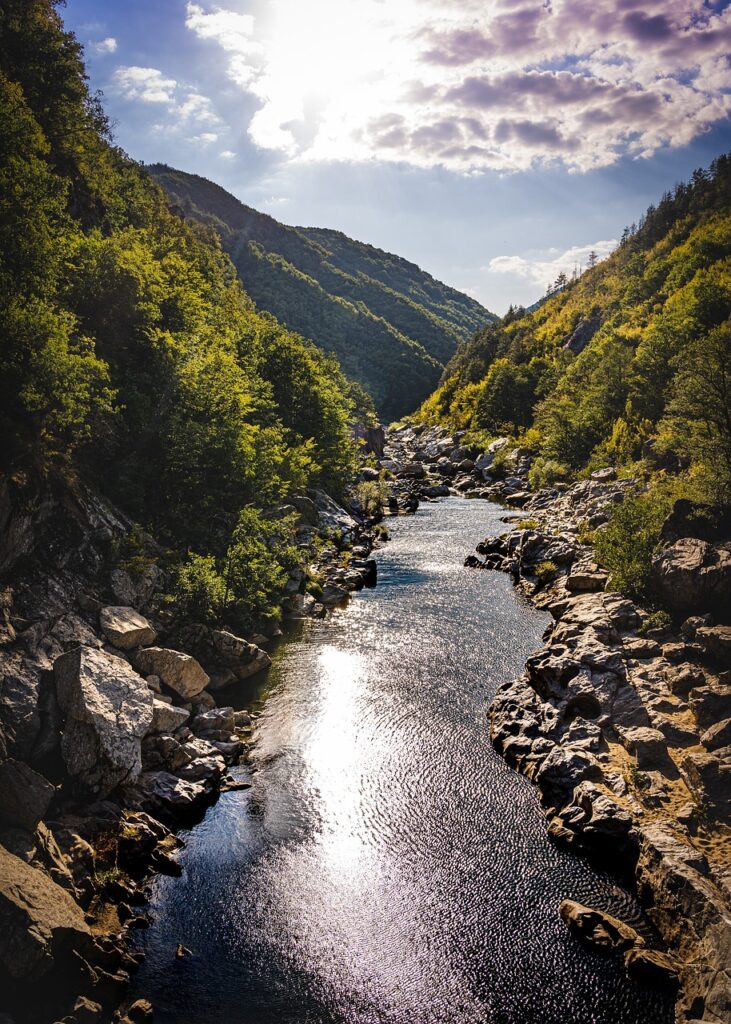Imagine finding yourself alone in the vast wilderness, surrounded by nature’s untamed beauty. Excitement and apprehension fill your heart as you embark on this wild adventure. But don’t worry, because in this article, we will share with you the essential tips that will ensure your survival and bring you back safely from the depths of the wilderness. From ensuring you have enough food and water to creating a shelter and navigating your surroundings, these key tips will equip you with the knowledge you need to conquer the challenges and embrace the wonders of the wilderness. So put on your explorer’s hat and get ready to embark on this thrilling journey!
Navigation
Use a compass
When venturing into the wilderness, one of the most important skills you need to have is navigation. Using a compass can help you stay on track and prevent getting lost. A compass always points north, which allows you to determine your direction and find your way back to your starting point. Make sure you familiarize yourself with how to use a compass before embarking on your wilderness adventure.
Learn how to read a map
In addition to using a compass, it is crucial to learn how to read a map. A map provides a bird’s eye view of the terrain, allowing you to plan your route and identify key landmarks. Understanding symbols, contour lines, and scales on a map can guide you in selecting the best paths and avoiding obstacles. Take the time to study maps of the area you’ll be exploring and practice reading them to enhance your navigational skills.
Use natural landmarks
Nature provides its own navigational clues in the form of natural landmarks. Mountains, rivers, and prominent rock formations can serve as reference points for navigation. Observing the position of the sun and using it as a guide can also provide valuable orientation information. By paying attention to your surroundings and identifying natural landmarks, you can enhance your navigation skills and find your way more easily.
Learn basic orienteering skills
Orienteering is a sport and navigation technique that involves using a map and compass to navigate through unfamiliar terrain. By learning basic orienteering skills, such as understanding map symbols and using compass bearings, you can improve your ability to navigate in the wilderness. Participating in orienteering activities and practicing your skills in controlled environments will help you develop confidence in finding your way in any wilderness setting.
Shelter
Find or build a suitable shelter
Having a suitable shelter is crucial for survival in the wilderness. While finding natural shelters, such as caves or overhanging rocks, is advantageous, it is not always a possibility. In such cases, knowing how to build a shelter using available resources is essential. Lean-tos, debris huts, and tarp shelters are some options for constructing a suitable shelter to protect you from the elements and provide a safe resting place.
Learn different types of shelters
Familiarize yourself with different types of shelters that can be built in the wilderness. Each shelter type has its advantages and drawbacks in terms of insulation, ventilation, and construction time. Some common types include A-frame shelters, igloos, and snow caves for winter survival, while tree platforms and dugout shelters are suitable for other seasons. Having knowledge of various shelter designs will allow you to adapt to different terrain and weather conditions.
Pack necessary shelter materials
In addition to being able to build a shelter, it is essential to pack the necessary materials. These may include a tent, tarp, or emergency bivvy bag. Ensure that your shelter materials are lightweight, durable, and suitable for the expected weather conditions. It is also a good idea to carry extra cordage or rope for securing your shelter and repairing any damages that may occur.
Consider climate and terrain conditions
When preparing for a wilderness adventure, it is crucial to consider the climate and terrain conditions you’ll encounter. Different regions have varying weather patterns, such as extreme heat, heavy rain, or freezing temperatures, that will impact your shelter needs. Research the area you plan to explore and pack appropriate gear to protect yourself from the elements. Additionally, understand the terrain you’ll be navigating, as this can influence your shelter choices and construction methods.

Water
Locate a water source
Access to clean water is vital for survival in the wilderness. Learning how to locate a water source is a critical skill. Look for signs of water such as lush vegetation, animal tracks, or insect activity. Streams, rivers, and lakes are usually reliable sources, but be cautious of stagnant water that may be contaminated. Study maps and topographical features to identify potential water sources before your journey.
Ensure water is safe to drink
Not all water sources in the wilderness are safe to drink. Bacteria, parasites, and chemical contaminants can be present and lead to illness. To ensure your water is safe, use water purification methods such as boiling, filtering, or using water treatment tablets. Boiling water for at least one minute or using a water filter with a pore size of 0.2 microns can effectively remove most harmful organisms. Purifying water is essential for preventing dehydration and waterborne illnesses.
Collect and store water
Once you’ve located a water source and ensured its safety, it’s crucial to collect and store an adequate supply. Use clean containers, such as water bottles or collapsible water reservoirs, to gather and store water. Having multiple containers allows for flexibility and backup options. Consider a water storage capacity that will sustain you throughout your journey, factoring in the climate and average water consumption.
Learn alternative water sources
While natural water sources are the most reliable, it’s essential to learn about alternative water sources in case of emergencies. This knowledge can prove invaluable when faced with situations where you cannot access or find water easily. For example, knowing how to extract water from plants, collecting rainwater, or creating a solar still can provide solutions in arid environments or when water sources are scarce.
Fire
Learn basic fire-starting techniques
Fire provides warmth, light, and a means to cook food in the wilderness. Learning basic fire-starting techniques is crucial for your survival. Techniques such as using a fire starter, magnesium fire starter, or friction methods like the bow drill or hand drill will enable you to ignite a fire even in challenging conditions. Practice these techniques in different weather conditions to enhance your skills and ensure you can start a fire when needed.
Pack reliable fire-starting tools
In addition to knowing how to start a fire, it is essential to have reliable fire-starting tools in your survival kit. Waterproof matches, lighters, or a fire striker are some examples of tools that can spark a flame. Pack these tools in waterproof containers to ensure they are protected from moisture, as dry fire-starting materials are more effective in igniting a fire.
Gather dry tinder and firewood
To sustain a fire, you’ll need adequate tinder and firewood. Tinder refers to small, dry materials that can easily catch fire, such as dry leaves, grass, or bark. Collecting tinder before starting a fire will make the process smoother. Once the fire is established, gather firewood of varying sizes to maintain the fire’s heat and longevity. Look for dead and fallen branches, as well as standing dead trees, but avoid damaging live trees or breaking branches that provide habitat for wildlife.
Ensure proper fire safety
While fire is a valuable survival tool, it must be handled with care to prevent accidents and wildfires. Always follow local fire regulations and restrictions. Clear a safe area for your fire by removing flammable debris and creating a fire pit with rocks, if possible. Never leave a fire unattended and ensure it is fully extinguished before leaving the area. Remember, it is your responsibility to prevent wildfires and protect the wilderness for future generations to enjoy.

Food
Learn about edible plants
Obtaining food in the wilderness can be challenging, but learning about edible plants can provide an additional food source. Research and identify local edible plants before your trip. Know which plants are safe to consume and which ones to avoid. Pay attention to their appearance, medicinal properties, and any preparation methods required. Remember, misidentifying plants can have serious consequences, so consult field guides or experts to ensure accuracy.
Learn basic hunting and fishing techniques
Hunting and fishing techniques can offer the opportunity to procure protein-rich food in the wilderness. Learn basic skills such as setting traps, constructing fishnets, or using a fishing rod and reel. Familiarize yourself with local regulations and restrictions regarding hunting and fishing, ensuring you comply with ethical and legal practices. Additionally, carry the necessary equipment and learn how to clean and prepare the catch safely.
Pack emergency food rations
While foraging and hunting can provide sustenance, it is wise to pack emergency food rations in case of limited or unsuccessful food-gathering opportunities. Select lightweight, non-perishable items with high nutritional value, such as energy bars, dried fruits, nuts, or dehydrated meals. Monitor the expiration dates and periodically rotate your emergency food supply to ensure freshness and effectiveness.
Consider storage and preservation methods
In situations where you have access to a surplus of food, it is crucial to store and preserve it properly. Utilize airtight containers or food storage bags to protect food from moisture, insects, and other animals. Consider dehydrating or smoking meat and fish to extend their shelf life. Acquiring knowledge of food preservation techniques will allow you to make the most of your food resources, increasing your chances of long-term survival.
First Aid
Pack a well-equipped first aid kit
Accidents and injuries can happen in any wilderness setting, so packing a well-equipped first aid kit is essential. Your first aid kit should contain a variety of supplies, including bandages, antiseptic ointments, adhesive tape, pain relievers, and any necessary prescription medications. Customize your kit based on the activities you’ll be engaging in and the potential injuries you may encounter. Regularly check your first aid kit to ensure supplies are not expired or damaged.
Learn essential first aid skills
Having a first aid kit is not enough; you must also possess essential first aid skills. Take a wilderness first aid course or educate yourself through online resources and books. Learn how to provide basic treatments for common wilderness injuries such as cuts, burns, sprains, and insect bites. Understanding how to immobilize fractures and identify signs of hypothermia or heat stroke can be life-saving knowledge in remote areas.
Address common wilderness injuries
In the wilderness, certain injuries are more common than others. Knowing how to address these injuries can make a significant difference in survival. Some typical wilderness injuries include blisters, twisted ankles, hypothermia, and dehydration. Learn how to treat these injuries appropriately and carry specific supplies in your first aid kit. Understanding proper wound care, managing fractures, and administering CPR or rescue breathing are also valuable skills to learn.
Know how to signal for help
Despite taking precautions and being prepared, there may be situations where you require outside assistance. Knowing how to signal for help is crucial in such instances. Develop an understanding of different distress signals, such as using a whistle, mirror, or flashlight. Building SOS signs with rocks or using brightly colored clothing or tarps to attract attention are effective methods. Additionally, understand the universal distress signals for air or water rescue, should you find yourself in those circumstances.

Survival Skills
Stay calm and maintain a positive mindset
Maintaining a calm and positive mindset is vital in wilderness survival situations. Panic and anxiety can cloud your judgment and hinder your decision-making abilities. Remind yourself to stay calm, assess the situation, and formulate a plan. By maintaining a positive outlook and believing in your abilities, you will be better equipped to overcome challenges and find solutions.
Build and maintain mental strength
Surviving in the wilderness requires mental strength and resilience. Develop mental fortitude by challenging yourself both physically and mentally in everyday life. Engage in activities such as meditation, visualization exercises, or mental puzzles to sharpen your focus and concentration. Building mental strength will help you endure hardships, maintain motivation, and adapt to unforeseen circumstances.
Develop problem-solving abilities
In the wilderness, problems will inevitably arise, and finding solutions quickly can be crucial for survival. Developing problem-solving abilities will enable you to think critically and creatively when faced with challenges. Practice problem-solving scenarios in your daily life to enhance your ability to make quick decisions and take calculated risks. The more you exercise your problem-solving skills, the more prepared you’ll be to tackle unexpected situations in the wilderness.
Practice situational awareness
Being aware of your surroundings at all times is essential for survival. Situational awareness allows you to identify potential dangers, locate resources, and anticipate changes in weather or wildlife behavior. Practice observing and interpreting your environment in everyday settings to enhance your situational awareness skills. Always be alert, listen to your instincts, and continually assess your surroundings for any signs of potential threats or opportunities.
Wildlife
Learn about local wildlife
Understanding the behavior and habitat of local wildlife is crucial for your safety in the wilderness. Research the area you’ll be exploring to familiarize yourself with the species that inhabit it. Learn about their typical behaviors, feeding patterns, and potential encounters. This knowledge will help you avoid dangerous wildlife encounters and enable you to coexist respectfully with animals in their natural environment.
Take precautions to avoid encounters
While some wildlife sightings can be thrilling, it’s important to take precautions to avoid unnecessary encounters. Store food securely and dispose of waste properly to prevent attracting animals. Keep a safe distance from wild animals and avoid approaching them, especially if they are accompanied by young. Make noise while hiking or moving through dense vegetation to alert wildlife of your presence. By respecting wildlife and their territories, you minimize the risk of dangerous encounters.
Know how to react to different animals
Despite taking precautions, there may be situations where you come face-to-face with wildlife. Knowing how to react calmly and appropriately is crucial. Research the specific animals you may encounter and understand their typical behavior. For example, standing tall and slowly backing away from a bear is generally recommended, while standing your ground against a mountain lion is necessary. Educate yourself on animal-specific tips and techniques to ensure you react in a manner that maximizes your safety.
Store food and dispose of waste properly
Properly storing food and disposing of waste is essential for wildlife conservation and personal safety in the wilderness. Use bear-resistant containers or hang food from a tree branch away from your sleeping area to prevent animals from accessing your food supply. Pack out all waste, including food scraps, wrappers, and toilet paper, to minimize environmental impact and avoid attracting wildlife. Leaving no trace ensures that you leave the wilderness as undisturbed as possible.

Weather
Understand local weather patterns
Recognizing local weather patterns is vital for your safety in the wilderness. Study weather forecasts specific to the area you’ll be exploring, paying attention to temperature variations, precipitation likelihood, and wind speed. Understanding how weather systems typically develop and change will help you plan accordingly and make informed decisions about your activities and route choices.
Prepare for extreme weather
The wilderness can subject you to a wide range of extreme weather conditions. Prepare accordingly by packing appropriate gear for hot, cold, or wet weather. Carry sun protection such as hats, sunglasses, and sunscreen to shield yourself from harmful rays. In colder conditions, ensure you have layered clothing, a waterproof jacket, and insulated footwear to combat low temperatures. Be prepared for sudden weather changes by carrying essential gear to keep you safe and comfortable.
Pack appropriate clothing and gear
Having proper clothing and gear is crucial for wilderness survival, particularly when it comes to weather conditions. Dress in layers to adjust your body temperature as needed. Pack moisture-wicking and quick-drying clothing to stay dry, as wet clothes can lead to hypothermia. Wear sturdy and comfortable footwear suitable for the terrain. Carry a waterproof backpack cover and dry bags to protect your gear in case of rain. Always be prepared for changing weather conditions by having appropriate clothing and gear readily available.
Seek shelter during severe conditions
In extreme weather conditions such as thunderstorms, blizzards, or heatwaves, seeking shelter is essential for your safety. Identify potential shelters in advance, such as caves, natural rock formations, or designated emergency shelters. If caught in severe weather, find a safe location away from tall objects, bodies of water, or exposed areas prone to lightning strikes. Prioritize finding shelter and wait for the conditions to improve before continuing your journey.
Essential Equipment
Choose a suitable backpack
Your backpack is your lifeline in the wilderness, carrying all your essential gear and supplies. Choose a backpack that is comfortable, durable, and suits your needs. Consider the size and volume of the backpack based on the length of your trip and the equipment you’ll be carrying. Look for features such as adjustable straps, padded hip belts, and multiple compartments for efficient organization. Ensure the backpack fits properly to avoid discomfort and strain during long hikes.
Pack necessary survival gear
Having the right survival gear can mean the difference between life and death in the wilderness. Some essential items to include are a multi-tool, flashlight or headlamp, whistle, signal mirror, compass, map, and extra batteries. Carry a lightweight, compact sleeping bag and a reliable waterproof tent or tarp for shelter. Don’t forget to pack a portable water filter, fire-starting materials, and a first aid kit. Tailor your gear selection to the environment and potential risks you may encounter.
Include multipurpose tools
When faced with limited resources in the wilderness, multipurpose tools can prove indispensable. Items like a Swiss Army knife or a multi-tool can provide various functions, including cutting, sawing, opening cans, and serving as pliers. These tools are lightweight, compact, and can save space in your backpack, making them an excellent addition to your survival gear.
Bring essential hygiene items
Maintaining good hygiene in the wilderness is crucial for your well-being. Pack essential hygiene items such as biodegradable soap, toothbrush, toothpaste, and toilet paper. Practice Leave No Trace principles when using nature as your restroom, ensuring waste is buried at least six inches deep or packed out. Washing your hands regularly, especially before handling food, can help prevent illness. By prioritizing hygiene, you can minimize health risks and stay comfortable throughout your wilderness journey.
Surviving in the wilderness requires a combination of knowledge, skills, and proper preparation. By mastering navigation techniques, understanding how to find or build suitable shelter, knowing how to obtain, treat, and store water, possessing fire-starting skills, learning about edible plants, acquiring first aid knowledge, honing survival skills, respecting and avoiding wildlife encounters, preparing for extreme weather, and packing essential equipment, you can embark on your wilderness adventure with confidence. Remember to always prioritize safety, be aware of your surroundings, and respect the natural environment. With these key tips in mind, you can enjoy your wilderness experience and emerge unscathed.

